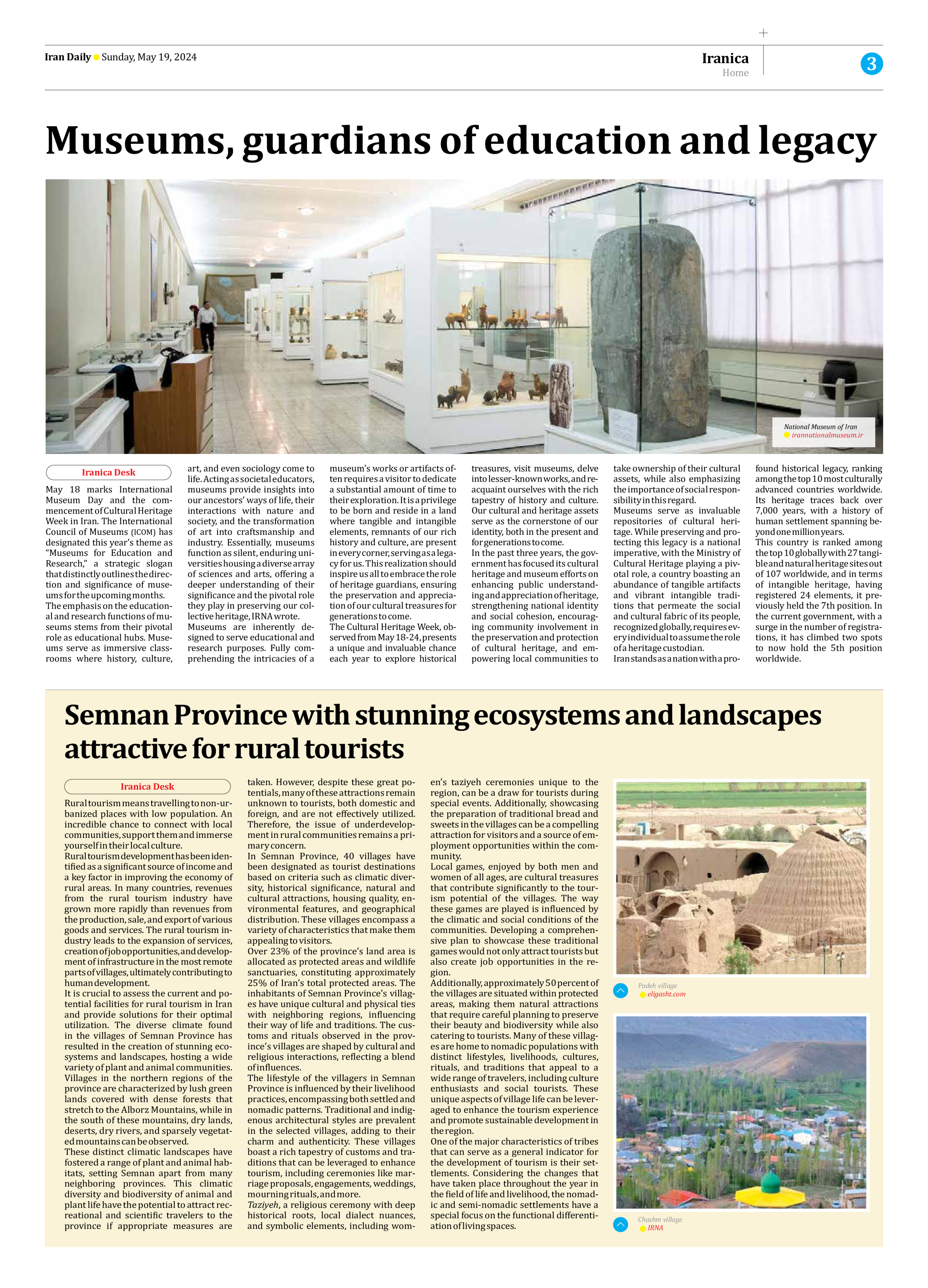
Museums, guardians of education and legacy
May 18 marks International Museum Day and the commencement of Cultural Heritage Week in Iran. The International Council of Museums (ICOM) has designated this year’s theme as “Museums for Education and Research,” a strategic slogan that distinctly outlines the direction and significance of museums for the upcoming months.
The emphasis on the educational and research functions of museums stems from their pivotal role as educational hubs. Museums serve as immersive classrooms where history, culture, art, and even sociology come to life. Acting as societal educators, museums provide insights into our ancestors’ ways of life, their interactions with nature and society, and the transformation of art into craftsmanship and industry. Essentially, museums function as silent, enduring universities housing a diverse array of sciences and arts, offering a deeper understanding of their significance and the pivotal role they play in preserving our collective heritage, IRNA wrote.
Museums are inherently designed to serve educational and research purposes. Fully comprehending the intricacies of a museum’s works or artifacts often requires a visitor to dedicate a substantial amount of time to their exploration. It is a privilege to be born and reside in a land where tangible and intangible elements, remnants of our rich history and culture, are present in every corner, serving as a legacy for us. This realization should inspire us all to embrace the role of heritage guardians, ensuring the preservation and appreciation of our cultural treasures for generations to come.
The Cultural Heritage Week, observed from May 18-24, presents a unique and invaluable chance each year to explore historical treasures, visit museums, delve into lesser-known works, and reacquaint ourselves with the rich tapestry of history and culture. Our cultural and heritage assets serve as the cornerstone of our identity, both in the present and for generations to come.
In the past three years, the government has focused its cultural heritage and museum efforts on enhancing public understanding and appreciation of heritage, strengthening national identity and social cohesion, encouraging community involvement in the preservation and protection of cultural heritage, and empowering local communities to take ownership of their cultural assets, while also emphasizing the importance of social responsibility in this regard.
Museums serve as invaluable repositories of cultural heritage. While preserving and protecting this legacy is a national imperative, with the Ministry of Cultural Heritage playing a pivotal role, a country boasting an abundance of tangible artifacts and vibrant intangible traditions that permeate the social and cultural fabric of its people, recognized globally, requires every individual to assume the role of a heritage custodian.
Iran stands as a nation with a profound historical legacy, ranking among the top 10 most culturally advanced countries worldwide. Its heritage traces back over 7,000 years, with a history of human settlement spanning beyond one million years.
This country is ranked among the top 10 globally with 27 tangible and natural heritage sites out of 107 worldwide, and in terms of intangible heritage, having registered 24 elements, it previously held the 7th position. In the current government, with a surge in the number of registrations, it has climbed two spots to now hold the 5th position worldwide.







